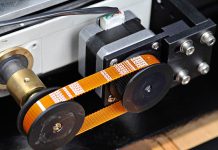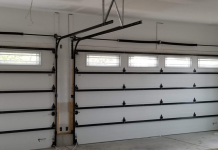Ceramic coatings represent one of the most innovative technologies for protecting surfaces.
When we examine the specifics of these superior coatings, we enter an area where functionality and durability go hand in hand. Hence, this exploration establishes the strength provided by ceramic coatings, which extends to characteristics such as corrosion and abrasive resistance, as well as temperature resilience, while also improving efficiency by means of thermal relief.
This article seeks to provide insight into the attributes of Ceramic Coating and establish a new paradigm shift in the protection of surfaces in today’s world.
What is Ceramic Coating?
Ceramic coatings represent the pinnacle of protective technology, classified under an extensive array of inorganic, non-metallic spray applications derived from sturdy ceramic substances. These coatings, diverse in type, are meticulously designed to meet specific demands. They encompass oxide coatings, non-oxide coatings, composite, and silicate-based formulations, each distinguished by its exclusive defensive attributes.
The assortment of materials utilized in these protective layers spans a comprehensive selection of ceramics. Oxide ceramics are represented by compounds including Al2O3, TiO2, ZrO2, Cr2O3, SiO2, MgO, BeD, and Y2O3. The catalog extends into carbide ceramics with examples like SiC, WC, BC, and TiC; nitride ceramics feature Si3N4, TiN, BN, and AlN; and boride ceramics such as TiB and ZrB2 also play a vital role. This expansive range underlines ceramic coatings’ versatility and tailored approach in offering unmatched surface protection.
Performance Characteristics of Ceramic Coatings
The diverse adjustment possibilities and wide-ranging applications of ceramic coatings can primarily be attributed to their unique performance characteristics:
High Performance Under Extreme Conditions
Ceramic coatings excel in environments that would degrade lesser materials. They withstand scorching temperatures, resist wear from constant use, and repel the pervasive threat of corrosion. These coatings imbue the coated item with the best features of both ceramics (high chemical stability and low thermal conductivity) and metals (such as flexibility and electrical conductivity). Notably, thermal protection is invaluable in aviation, where engines may run at high temperatures, and wear resistance is essential in machinery with moving parts that necessitate low friction and high durability.
Flexibility in Material Choice and Application
The array of materials available for the formulation of ceramic coatings means that it is possible to tailor them to specific uses. The range of combinations is extensive, whether combining ceramics with other ceramics for advanced thermal barrier purposes, with metals to improve wear resistance, or even with plastics to enhance longevity. This means manufacturers do not need to reinvent their processes to benefit from these coatings. Instead, they can integrate them into the existing production line, adopting new technology without disrupting established methods.
Ease of Application
Applying ceramic coatings is a process that can be mastered with relative ease. They can be deposited rapidly and with a controllable thickness that suits the part and application, whether it requires a thin veneer of protection or a more substantial barrier. A noteworthy feature is the accommodation of various sintering processes, which bond the ceramic material to the substrate. The process is versatile enough to coat intricately shaped objects, from thin and delicate parts to those with complex internal geometries. It can also be fine-tuned to fortify specific regions of a component that may face heightened stress or wear.
Versatile Substrate Compatibility
Ceramic coatings can bond with an astonishingly wide array of substrate materials. Metals can be given a coat to increase heat resistance, while softer materials like plastics can be made more durable and wear-resistant. This universality means that existing components in countless applications can be treated and improved without the need for complete redesign or replacement—contributing to a circular economy by allowing substrate reuse, even if the coating itself needs repairing or replacement.
Economic and Efficient
Despite their robustness, ceramic coatings are remarkably lightweight and can be applied thinly—sometimes only a few microns thick—meaning that the coating does not add substantial weight or bulk to the component. This thin application conserves material and reduces costs while significantly enhancing product longevity and function. This is a huge boon for industries where weight is critical, such as aerospace and automotive, where the strength-to-weight ratio is paramount.
Unrestricted Application Scope
The absence of constraints on the size or shape of the workpiece makes versatility one of the hallmark features of ceramic coatings. Large structural components can be treated as easily as small precision parts. Achievable in a dedicated facility equipped for such work or via on-site applications, the coatings provide operational flexibility unrivaled by other options on the market. This opens up the realm of possibilities to virtually any object that can benefit from ceramic materials’ protective and enhancing qualities.
Final Thoughts
Ceramic coatings continue to reshape the landscape of materials technology due to their superior characteristics, including the ability to withstand harsh conditions, adaptable integration with various materials, ease of application, and remarkable compatibility with diverse substrates. Their economic and efficient use further propels their desirability in multiple industrial applications, making them an invaluable asset in the quest for durability, functionality, and innovation.










